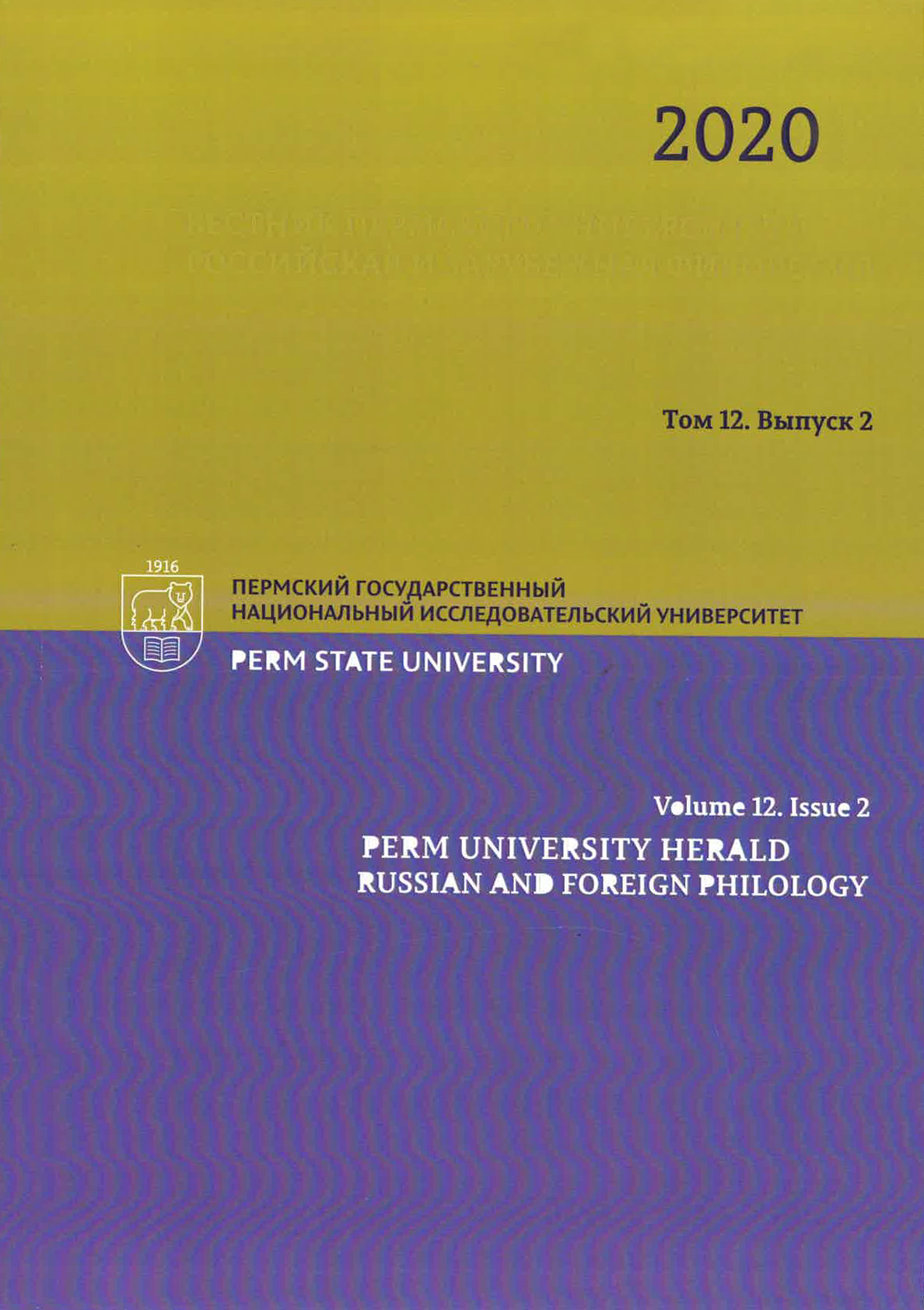FIGURATIVE LANGUAGE IN TRANSLATION OF TAIWANESE COMMERCIAL ADVERTISEMENT
DOI:
https://doi.org/10.17072/2073-6681-2020-2-63-71Keywords:
cultural intermediary, domestication, encyclopedic (interdisciplinary) knowledge, equivalence, foreignization, re-contextualization theory, Skopostheorie, translational creativity.Abstract
This study is an analysis of Taiwanese companies’ promotional texts. The products advertised include computer programs and games, high-tech computer equipment, machinery, spare parts for cars, LEDs, cosmetics, and other goods for distribution in Russian-speaking markets of CIS countries. Therefore, the target language (TL) of translation was Russian. The researcher has been collecting Taiwanese promotional translation texts for over ten years. This research utilizes an empirical inductive method and is supported by relevant translation theories such as Skopostheorie by Vermeer [1989] and re-contextualization theory by House [2008]. The article analyzes the difficulties in translating promotional materials from Chinese as the source language (SL) into English as the intermediary language (IL) and then from English into Russian as the target language (TL). The article demonstrates how an intercultural competence can be developed in doing international business when there are language barriers. Data analysis has revealed that Taiwanese promotional texts frequently use epithets, metaphors, idioms, sayings and proverbs which are integral to Chinese culture and speech. This type of figurative language is often difficult to translate due to cultural differences and lack of equivalent meanings or insufficient encyclopedic knowledge. In order to accurately convey the essence of the text translated, deliver effective promotional materials, and maintain the attractiveness of the product being advertised for the companies and their end users, a translator must become an intercultural mediator. This research will provide a greater insight into the interlingual and intercultural challenges and offer translation strategies that can assist translators in producing more accurate translations and maintaining more positive intercultural relations between Taiwan and other countries. This intercultural research will contribute to a greater understanding of how Taiwanese products can be better promoted in Russian-speaking markets.References
Baker M. In Other Words: A Coursebook on Translation. New York, Routledge, 1992. 304 p. (In Eng.)
Belloc H. On Translation. Oxford, Clarendon Press, 1931. 15 p. (In Eng.)
Benjamin W. Selected Writings: The Task of the Translator. Cambridge, MA, Harvard University Press, 1923, 1996/2004, vol. 1, pp. 253–263. (In Eng.)
Bhabha H. How newness enters the world. J. Procter (ed.) Writing Black Britain 1948–1998. An Interdisciplinary Anthology. Manchester and New York, Manchester University Press, 2000, pp. 300–306. (In Eng.)
Cuellar S.B. Equivalence Revisited: A Key Concept in Modern Translation Theory. Forma y Función, 2002, vol. 15, pp. 60–88. (In Eng.)
Haque Z. Translating literary prose: problems and solutions. International Journal of English Linguistics, 2012, vol. 2(6), pp. 97–111. (In Eng.)
He Ch., Xiao Yu. Brand name translation in China: An overview of practice and theory. Babel, 2003, issue 49(2), pp. 131–148. (In Eng.)
House J. Towards a linguistic theory of translation as re-contextualisation and a Third Space phenomenon. Linguistica Antverpiensia, New Series – Themes in Translation Studies, 2008, issue 7, pp. 149–175. (In Eng.)
Jakobson R. On linguistic aspects of translation. R. A. Brower (ed.) On Translation. Cambridge, MA, Harvard University Press, 1959, pp. 232–239. (In Eng.)
Leonardi V. The Role of Pedagogical Translation in Second Language Acquisition: From
Theory to Practice. Bern, etc., Lang, 2010. 179 p. (In Eng.)
Pommer S. E. No creativity in legal translation. Babel, 2008, issue 54(4), pp. 355–368. (In Eng.)
Sang J. & Zhang G. Communication across languages and cultures. A perspective of brand name translation from English to Chinese. Journal of Asian Pacific Communication, 2008, issue 18(2), pp. 225–246. (In Eng.)
Sperber D., Wilson D. Relevance: Communication and Cognition. Oxford, Basil Oxford Blackwell, 1986. 279 p. (In Eng.)
Sternberg R. J. (ed.). Handbook of Creativity. Cambridge, Cambridge University Press, 1999. 502 p. (In Eng.)
Vermeer H.J. Skopos and commission in translational action. A. Chesterman (ed.) Readings in Translation Theory. Helsinki: Oy Finn Lectura, 1989, pp. 173–187. (In Eng.)
Vermes A. The problem of cultural context in translation and translator education. Eger Journal of English Studies, 2007, VII, pp. 129–141. (In Eng.)
Wills W. Knowledge and Skills in Translator Behavior. Amsterdam / Philadelphia, John Benjamins, 1996. 256 p. (In Eng.)
Xiao F. An empirical study of figurative competence of Chinese EFL learners. American Journal of Educational Research, 2016, issue 4(11), pp. 806–810. (In Eng.)
Yakovleva E. Functions of attributes in translation of advertisement. International Youth Conference ‘Translation as a factor of development of science, technology and sport in the modern world’ within the Federal special-purpose program ‘Scientific and scientific-pedagogical personnel of innovative Russia in the years 2009–2013’, Vyatka State University for the Humanities. September 5–6, 2012, pp. 287–289. (In Eng.)
Yakovleva E. The role of a translator as a cultural mediator in the promotion of Taiwanese companies in the post-Soviet area. Perm University Herald. Russian and Foreign Philology, 2016, issue 3(35), pp. 75–84. (In Eng.)




